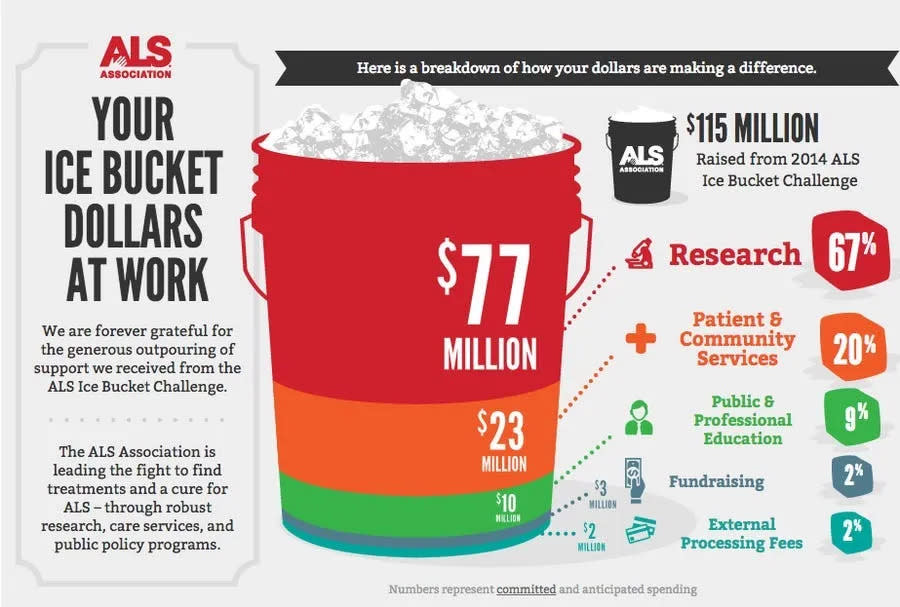ARTICLE AD

10 and a half (!!) years ago, the world was swept up with the Ice Bucket Challenge. I’m sure most of you remember what that was, and, like me, many of you participated in it yourself. If you need a quick refresher, the challenge started in the summer of 2014 as a way to raise money for ALS research. Essentially, someone challenged someone else to either donate money to ALS research or else film themselves dumping a bucket of ice water over their head. It blew the f-ck up thanks to social media (even celebrities got involved in the fun) and most of the time, people did both. There were, of course, detractors who felt that it was just an excuse for attention, but my view has always been that if someone is going to give money to a good cause only to get attention, then whatever. Who cares as long as they’re actually donating the money? That summer, more than $115 million was raised for ALS research while we all got really cold and laughed together.
Well, as it turns out, all of that icing ourselves “for attention” really did make a change. The money raised by the 2014 challenge, as well as subsequent ones in 2015 and 2016, helped fund new research that led to new therapies and a breakthrough in helping to understand the role a certain protein plays in ALS, which helped scientists develop new treatments to “significantly slow down the progression of ALS.”
They developed several new therapies and made critical discoveries in understanding ALS. With any disease, and especially one that’s incurable, you must first understand it in order to treat it. But there was an additional breakthrough.
There are a number of mysterious proteins in the body that aren’t fully understood. One of them is TPD-43. Through Ice Bucket Funding, they’ve discovered this protein is intrinsically related to ALS (most diseases originate from an extremely small origin point). In short, the protein isn’t doing its job correctly (protecting nerves). They figured this out via autopsies of ALS patients, who all showed pervasive dysfunction of TPD-43.
Now, they’re developing treatments that trick these proteins to stop killing nerves. This will significantly slow down the progression of ALS. In fact, the treatments are already working with mice.
This couldn’t have happened without these ice bucket challenges. PR, marketing, and fundraising often get convoluted with attention-seeking tactics, which are, to some extent, necessities of the trade. To designate them all as cheap marketing tactics does a disservice to the diverse set of players.
The Ice Bucket Challenge penetrated every corner of our culture. It was the trifecta of great non-profit marketing: fun, innovative, and monetarily effective. It’s proof that an idea can change the world.
Like HIV, there won’t likely be a cure anytime soon for ALS, but there will be a way to slow its advance. It’ll extend life for people, with more mobility, independence, and time with their families.
This is amazing. I’m not gonna lie – it got really dusty in the room after I read this story. In a world in which science is suddenly under constant attack from the political right and its bad faith actors, it can sometimes feel like the fight for any type of progress is in vain. So, it’s just really moving to hear that something that something we the people took part in actually made a real difference. It feels hopeful that some silly social media challenge we did 10 years ago and then didn’t give much thought to afterward actually saved lives and will continue to save lives. And no, I’m not saying that all scientific research should be crowd-funded. If anything, I hope this news reminds the public that there are good people out there doing incredible, necessary, life-saving work, and they deserve our support and gratitude.

 2 hours ago
1
2 hours ago
1 

